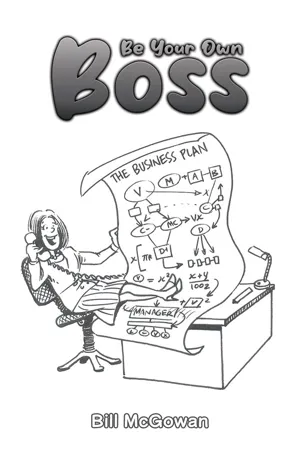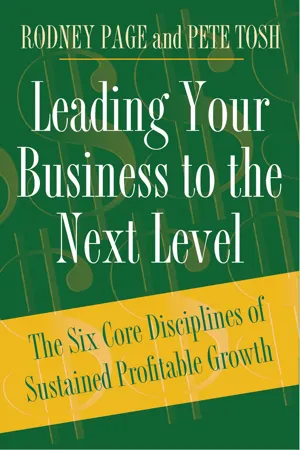Business
Business Planning
Business planning involves the process of setting goals, outlining strategies, and creating a roadmap for achieving success within a business. It typically includes elements such as market analysis, financial projections, and operational plans. The purpose of business planning is to provide a clear direction for the organization and to guide decision-making in order to achieve long-term objectives.
Written by Perlego with AI-assistance
Related key terms
1 of 5
9 Key excerpts on "Business Planning"
- eBook - PDF
A Complete Course in Canning and Related Processes
Fundamental Information on Canning
- D L Downing(Author)
- 2013(Publication Date)
- Woodhead Publishing(Publisher)
Creating A Business Plan One of the first steps in a new venture is the development of a written document called a business plan. It has been said that most businesses that fail, fail because there is no business plan. There is no one plan that will cover all situations so it should be tailored to the specific circumstances of the proposed business and should emphasize the strengths of the venture and address the potential problems and challenges to be faced. If the purpose of the plan is to seek capital, then the format requirements of the lender should be followed. A business plan describes the business: its product, market, people, operational characteristics, and financing needs. The process of putting a business plan together forces one to take an objective, critical, unemotional look at the entire business proposal. A well-prepared business plan serves several purposes: 1. For a new business, it helps the owner determine the feasibility and desirability of pursuing the steps necessary to start a business. 2. For a company seeking financing, it is an important sales document for raising capital from outside investors. 3. For a new or existing company, a business plan forms the basis of a more detailed operational plan and thus becomes an important management tool for monitoring the growth of the company and charting future directions. 4. For all companies it is an operational tool which, when properly used, will help manage a business and work toward its success. If one cannot supply the necessary information they should seek expert advice. Proposed Outline For A Business Plan The overall plan will consist of several components which will probably include the following: business organization, a marketing plan, a management plan, and a financial plan. - eBook - ePub
Start-Up Guide for the Technopreneur
Financial Planning, Decision Making, and Negotiating from Incubation to Exit
- David Shelters(Author)
- 2012(Publication Date)
- Wiley(Publisher)
Chapter 3Business Planning from a Strategic Financial Perspective
In this chapter, we demonstrate the value of a business plan. We list both internal and external purposes of composing a business plan for entrepreneurial ventures, discuss the main objectives to be accomplished for each section of the plan, examine how the plans can be customized based on the types of prospective investors sought, and present rudiments to follow in composing a business plan.Value of a Business Plan
The act of writing the business plan serves as a valuable thought-provoking exercise. Once completed, the plan serves as an essential reference source and basis for periodic updates. Drafting your business plan is the opportunity to incorporate your knowledge of your investors (KYI) in written form to efficiently organize and plan your business and represent your business effectively to prospective investors.What value does composing a business plan offer?Composing a business plan is a thought-provoking exercise that provides a method for you to set goals, priorities, and strategies. The goals, priorities, and strategies you decide on should be derived from the results of your KYI research and inquiries and what I call “discoveries” made during your brainstorming process with your founding partners. A discovery is any important, actionable notion that comes to your attention as you are composing your business plan or any other planning document. A discovery is actionable in that it prompts a revision, addition, deletion, or reformulation of a goal, priority, or strategy. As such, discoveries are key to effective Business Planning.A former client had an operational software as a service business when he hired me to help decide which of two different ways to focus his business. He had struggled with the choice for a long time. When I asked to see his business plan, he informed me that he never bothered to draft one because he never needed to raise funds from external sources. My response was that we needed to compose a business plan regardless of fundraising because it would help him organize his thoughts and determine where his focus should be. Not long after we began drafting the business plan, it became very evident that his current focus and strategy was flawed and that he should pursue a new strategy—one we conceived of while we examined his business in a holistic manner. He conceded that if he had not considered all aspects of his business simultaneously, he would have never of thought of this new and unique focus. - eBook - PDF
- John R. Bessant, Joe Tidd(Authors)
- 2018(Publication Date)
- Wiley(Publisher)
However, research is not unanimous on the role and effectiveness of business plans. Some studies indi- cate a positive relationship between the development of a formal business plan and the ability to attract external funding, 1 whereas others find no significant relationship. 2 Whatever the reality, the development of a convincing plan has become a rite of passage for a new venture. In practice, Business Planning serves a much broader function than funding, and can help to translate abstract or ambiguous goals into more explicit operational needs, and support subsequent decision-making and identify trade-offs. A business plan can help to make more explicit the risks and opportunities, expose any unfounded optimism and self-delusion, and avoid subsequent arguments concerning responsibilities and rewards. 5.1 What’s in a Business Plan? No standard business plan exists, but in many cases venture capitalists will provide a pro forma for their business plan. Typically, a business plan should be relatively concise, say no more than 10–20 pages, begin with an executive summary, and include sections on the product, markets, technology, development, production, marketing, human resources, financial estimates with contingency plans, and the timetable and funding requirements. A typical formal business plan will include the following sections: 3 1. Details of the product or service. 2. Assessment of the market opportunity. 3. Identification of target customers. 4. Barriers to entry and competitor analysis. 5. Experience, expertise, and commitment of the management team. 6. Strategy for pricing, distribution, and sales. 7. Identification and planning for key risks. 8. Cash-flow calculation, including break-even points and sensitivity. 9. Financial and other resource requirements of the business. - eBook - PDF
- Helmut Kohlert, Dawud Fadai, Hans-Ulrich Sachs(Authors)
- 2013(Publication Date)
- De Gruyter Oldenbourg(Publisher)
5.2 Business Plan as Roadmap 153 Figure 5.3: Reasons for putting together the business plan Some of the typical questions of the audiences of a business plan are in the following: Figure 5.4: Typical questions investors may ask The investors are not necessarily people with a commercial background. They may come out of other disciplines. Therefore the business plan should be very clear and precise : Objectives, strategies, and actions should be understandable for a non-technical, intelli-gent, interested reader. Vague generalities or unsubstantiated statements should be avoided. Do you plan your sales activities? Do you have a liquidity planning? Do you actualize your operative planning quarterly or monthly? Are you using self-developed Excel-sheets? How are you planning your financials? Do you have controlling tools, which are in use? Are you planning continuously? Do you have a planning handbook? 154 5 Formulating the Business Plan The plan is prepared by the management team, not just the leader founder or even an external consultant. The making can be supported by advisors, but the management team is responsible for it and it is “their plan”. It is short but complete, approximately 25 to 40+ pages excluding technical descriptions and goes into the details of the company. There are several documents the Entrepreneur should prepare and it maybe used for different occasions, called the “ business plan documentation ”: Figure 5.5: The business plan documentation The “ vision statement ” of the company is a description of the future, the future appear-ance of the company which leads to advantages for customers. It has nothing to do with hope, only people, who are desperate, hope. - eBook - PDF
- Greg Holden, Shannon Belew, Joel Elad, Jason R. Rich, Don Gulbrandsen(Authors)
- 2015(Publication Date)
- Wiley(Publisher)
This information is gathered by conducting market research and a careful analysis of competing Web sites. Section 3.4 • A business plan is a written document that de- tails all aspects of a proposed venture. Creating a business plan makes it easier to secure out- side financing, forces critical analysis, offers well-defined goals, and provides timeless guid- ance once a firm is up and running. Section 3.5 • Business plans should follow a relatively standardized format, which includes eight sections: executive summary, business de- scription, marketing, location, management team, critical risks, financial forecast, and appendix (containing important supporting documents). SUMMARY Chapter 3: Planning an E-Business 88 ASSESS YOUR UNDERSTANDING APPLY: WHAT WOULD YOU DO? 1. Not all business ideas are well suited for small-scale e-commerce sites. Of the following, which would or would not be appropriate for a small e-business? Briefly explain why . • A W eb site selling collectible figurines whose explosive popularity was launched by a blockbuster summer movie • An e-commerce site that sells high-quality , hard-to-get specialty Swedish cooking utensils with a small but growing following in the United States • A W eb site that sells new and used books at a discount 2. You have been asked to help evaluate an idea for selling gourmet dog treats over the Internet. Briefly outline a plan for conducting a three- rings exercise, suggesting possible survey sources and questions to ask in each analytical ring. 3. With the growing popularity of outdoor cooking, an entrepreneur thought that selling grilling tools online might be a good business idea. Begin a SWOT analysis for this concept by listing at least three factors to consider in each of the categories. 4. You are conducting a feasibility study for a one-person e-business that you are considering starting. Complete the “Experience” sec- tion, carefully considering your strengths and weaknesses for such a venture. - eBook - ePub
The Organizational Master Plan Handbook
A Catalyst for Performance Planning and Results
- H. James Harrington, Frank Voehl(Authors)
- 2012(Publication Date)
- Productivity Press(Publisher)
Work-out financing: Many angel investors and banks/lenders do not like to offer work-out financing, and those who are willing to do so will want to see a business plan that clearly identifies the reasons for current or previous problems and provides a strong plan for corrective action. No matter what manner or type of financing you are seeking, lenders expect to be apprised of the source and amount of any capital that has already been secured, spent, or dissipated. They also often expect key executives to have made substantial personal equity investments in the business. They will feel even more comfortable if they recognize any other investors who may have participated in earlier stages of the financing process.Component 2: A Strategic Vision is the Core of Your Business Plan *
* Definition of business strategy , from Entrepedia: The entrepreneurship wiki. Formulating a strategy is really about deciding what the objectives of the business are, and developing an overall strategy for how they should be achieved within the business environment. This should be done in a way that best takes advantage of the company’s resources and core competencies (what it does best— its key competitive advantages). Strategy formulation then needs to follow a process that includes: (1) understanding where the business is now: externally— in terms of its markets, customers, competitors and general business environment— and internally, in terms of its resources and competencies, i.e., swot analysis), (2) outlining objectives for the business in terms of where it wants to be— in order to continue towards (and hopefully also to thrive and grow in) the future, i.e., vision and mission statements, and ( 3) developing strategies and tactics for the business as a whole, and the different functions within it, in order to achieve these objectives, i.e., master planning strategy. www.entrepedia.org (accessed November 10, 2011).In almost every case, the first 50% of the Business Plan is geared toward helping develop and support a solid business strategy. Management and the board of directors must begin by looking at the market, the industry, the customer base, and its competition. They need to analyze and study customer needs and the benefits of current products and services. Next, they need to evaluate the strengths and weaknesses of each competing organization in order to look for opportunities in the marketplace during the next year and beyond. All of these activities are largely aimed at helping senior management create an ongoing strategy for the organization and its subsidiaries, if they have any. - Available until 4 Feb |Learn more
- Bill McGowan(Author)
- 2023(Publication Date)
- Austin Macauley Publishers(Publisher)
If you break the business down into operational areas and outline your strategy under each area you will find this a helpful way to ensure that all elements of the business will pull together in the same direction. For example, some areas could be staffing, marketing, sales, administration, training, recruitment, research, legal, I.T development, operations…and of course there are more depending on the type of business you are interested in. Certainly, a separate section on marketing could be very worthwhile. We will discuss marketing later. The strategies should then be built into a timeline, which will help you to achieve in a timely fashion.So back to our plumbing business example where the objective was to ensure repeat business from first time customers. The strategy might be to run a loyalty program. If so, you would fully outline what needs to be done, why you are doing it, who will do it, and when it will be done.Consequences of Failure
What should the consequences be if the proposed strategy doesn’t work? This is not the same as asking what the probability would be of it not proceeding. Some plans could jeopardise the whole existence or reputation of the business if things went wrong.Financial
You are now at the financial planning stage of your business plan where you assess the financial side of the business proposition. The strategies must all be brought together to enable the budget and cash flow predictions to be put together. If you are considering purchasing a new business analyse the vendors accounts carefully before preparing your own budget and cash flow.As we stated earlier a business plan is like a map or a series of steps needed to achieve goals and is necessary to evaluate the opportunity or make an informed decision on whether to go into the business. Keep the plan simple so you can make a decision quickly.Your business plan will include your financial projections for the year based on all the information you have gathered. These projections will include: - eBook - PDF
Small Business
Creating Value Through Entrepreneurship
- Vishal K. Gupta(Author)
- 2021(Publication Date)
- Wiley(Publisher)
As with writing any report (or term paper), getting started with a business plan is often the hardest part. 16.1.1 To Provide Direction When done well, a business plan should serve as a roadmap for the future. Anyone who has ever run a small business will tell you that it is easy to lose precious time in address- ing day-to-day operational issues. After dealing with everyday problems, many business owners have little time or energy left to attend to the strategic issues that matter for the overall well-being of the business. Popular sayings like “you ain’t gonna remember to swamp the drain when you’re swimming with the alligators” and “missing the forest for the trees” speak to the challenges of staying on course when you are consumed with the everyday needs of the business. When there is a good roadmap to guide you for the long term, the business is more likely to stay the course. 16.1.2 To Determine Feasibility There is something interesting about writing down your thoughts: it forces you to sift through the muddled, half-baked ideas in your head and make sense of what you really think. - eBook - PDF
Leading Your Business to the Next Level
The Six Core Disciplines of Sustained Profitable Growth
- Rodney Page, Peter Tosh(Authors)
- 2005(Publication Date)
- Praeger(Publisher)
Employees The employee base wants to understand what their em ployer's plans are. Of course, the full content of the plan cannot and should not be shared with all of the employees. However, to expect the employees to be committed to what is asked of them, they need to know where the company is going. The senior team should present a relevant synopsis of the plan and provide updates as appropriate. As we will address in chapter 5, leaders must appeal equally effectively to the followers' hearts and minds. Company picnics and a nourishing work environment will soothe the heart. A concise explanation of where the company is going and how it intends to get there invigorates the mind. Key Linkages Four fundamental threads weave the plan into the operations of the business and facilitate its execution. Without these linkages, successful plan execution is all but impossible. The Marketing and Operations Plans Marketing and Operations Plans a those formal and quasi-formal planning activities that bring granular- ity to the strategies developed at the corporate level. Though technically considered planning activities, they build the bridge between the cor- porate plan and tactical departmental activities. Without that bridge, growing companies find overall execution difficult. During start-up, the 86 Leading Your Business to the Next Level leap between the corporate plan and daily tactics was easy to make, but with the complexities of growth, the gap widens. Therefore, "fleshing out" the corporate plan in the form of details of just how the company will acquire/retain customers and produce its products and services (Marketing and Operations Plans) becomes a step necessary for suc- cessful execution. The Budget Though the case for planning and budgeting integration was made in an earlier chapter, we reiterate their primary function: to quantify the activities defined by the company's plans and document progress made.
Index pages curate the most relevant extracts from our library of academic textbooks. They’ve been created using an in-house natural language model (NLM), each adding context and meaning to key research topics.








